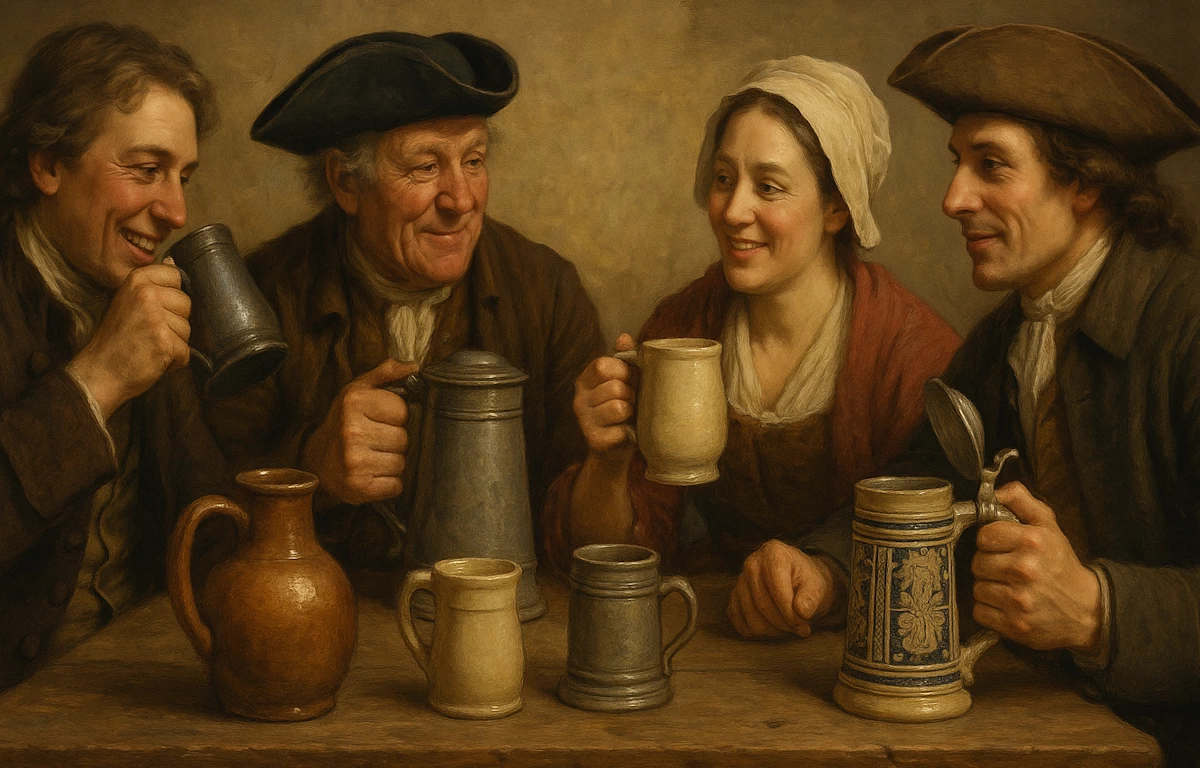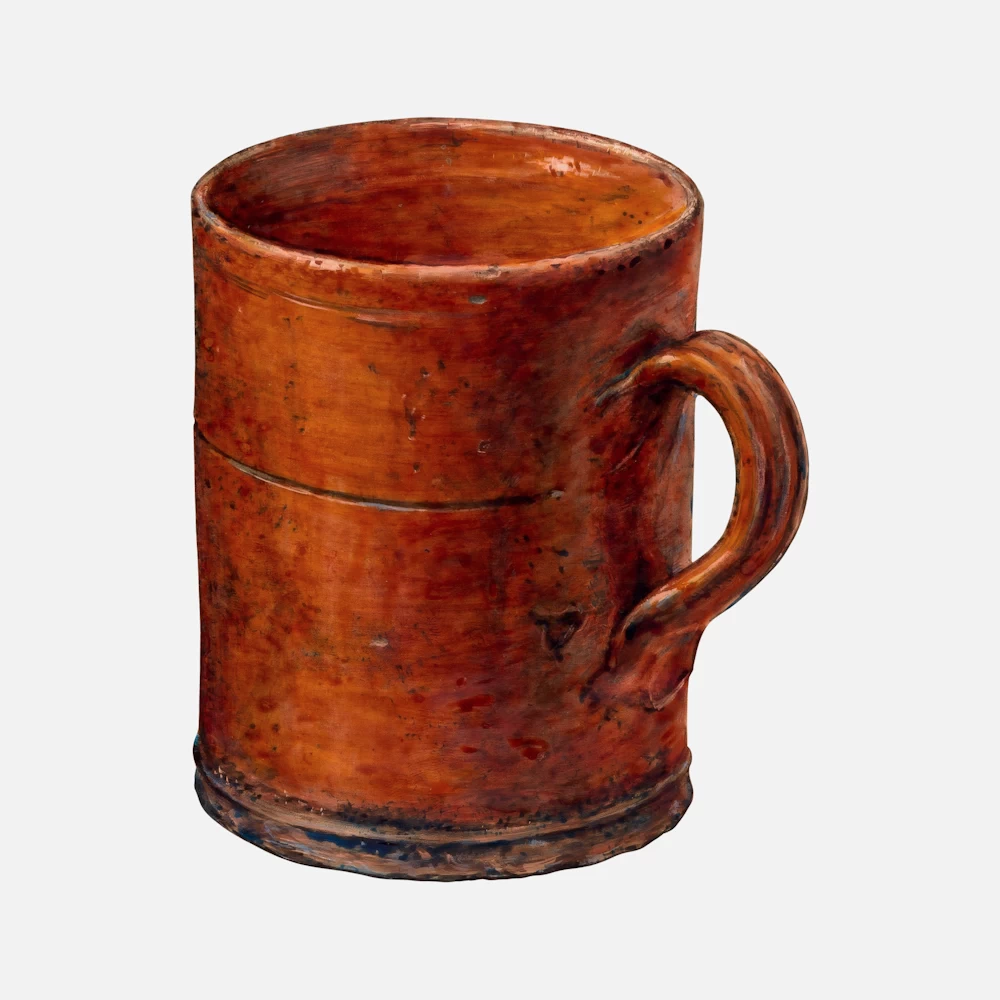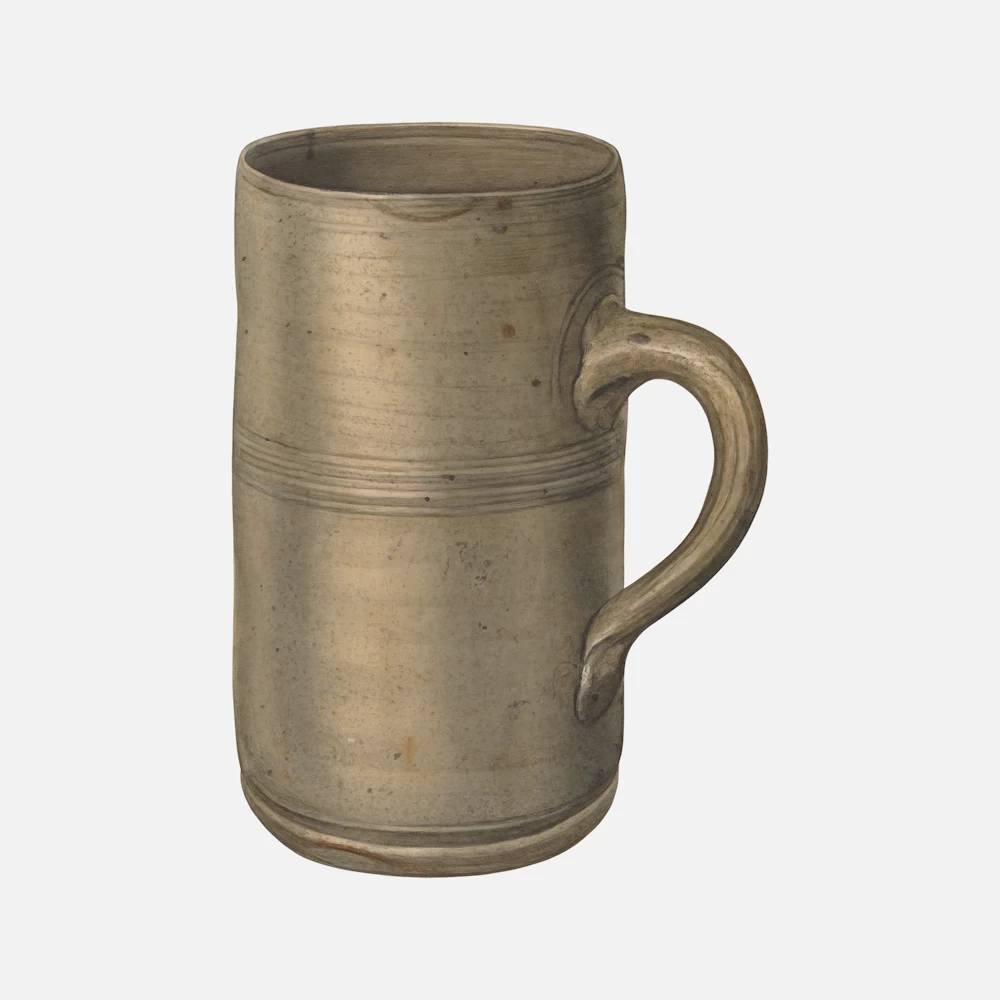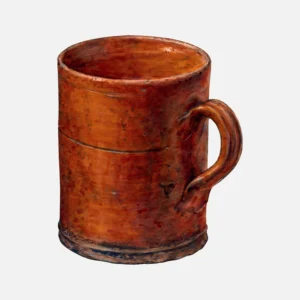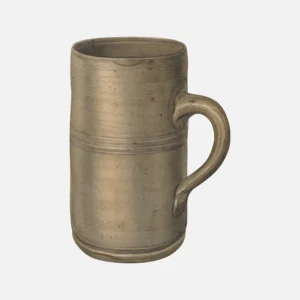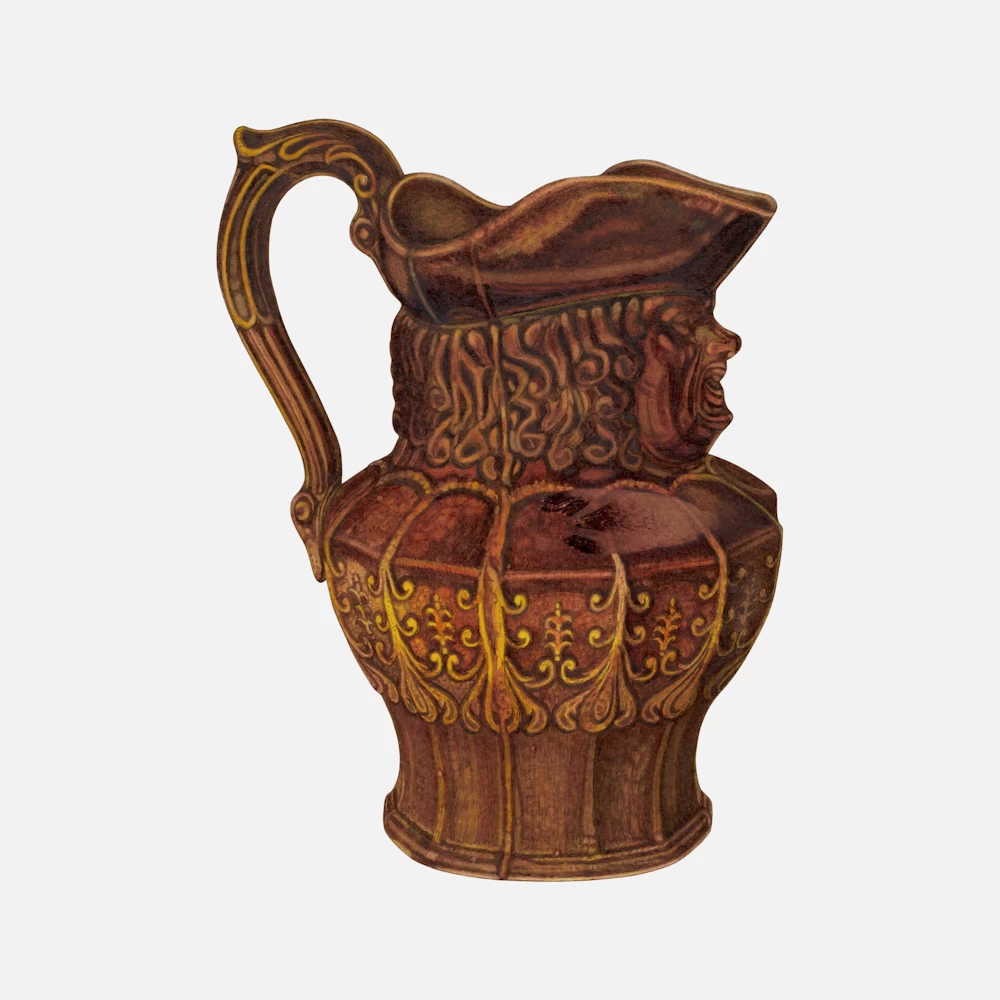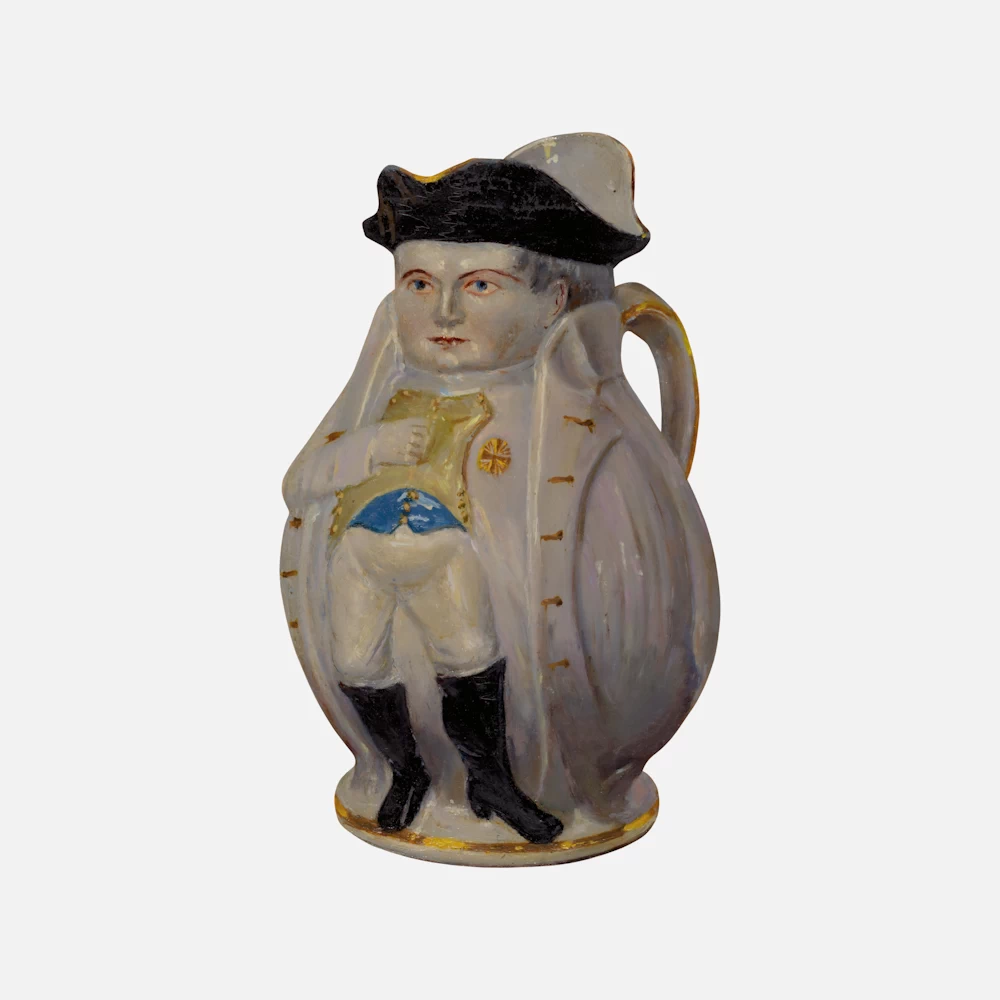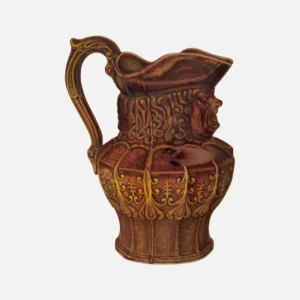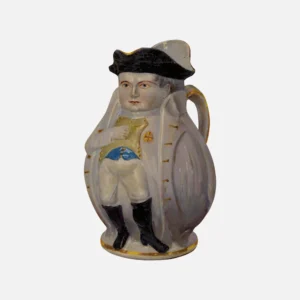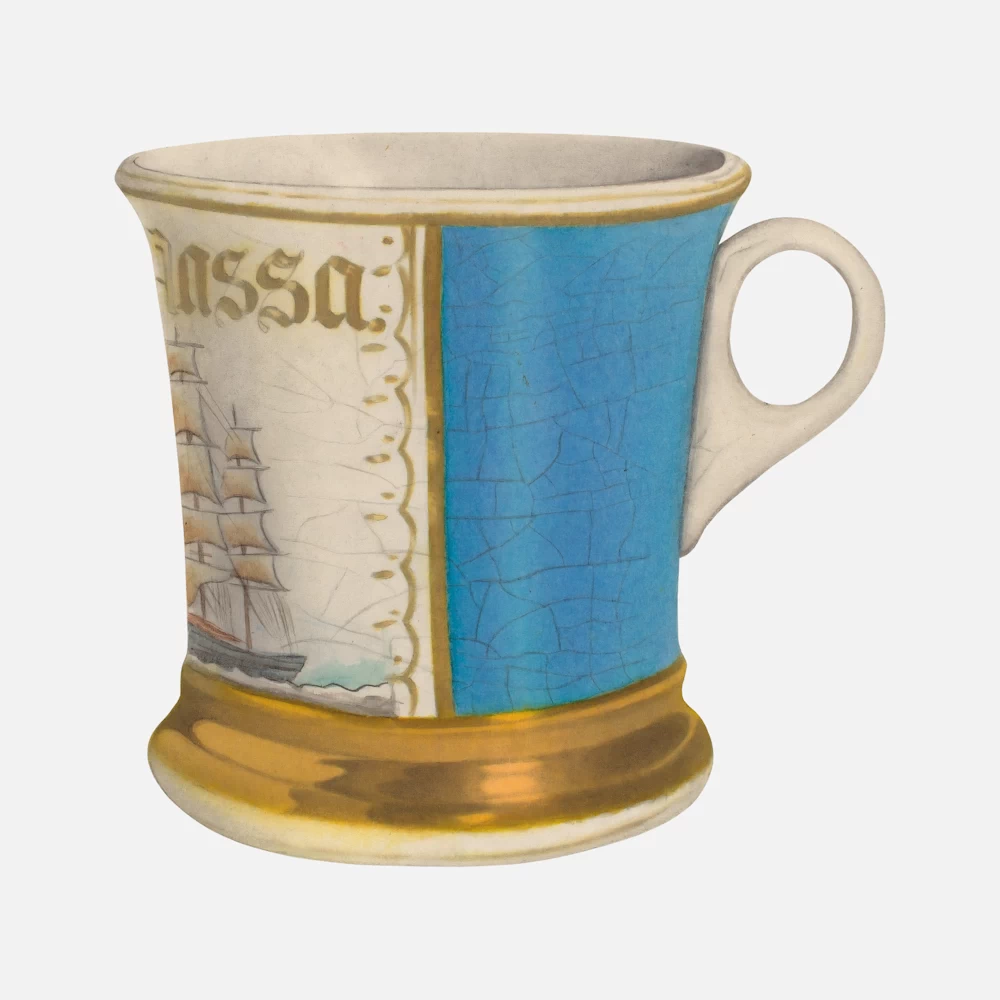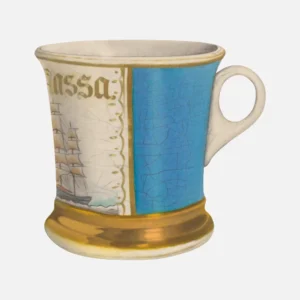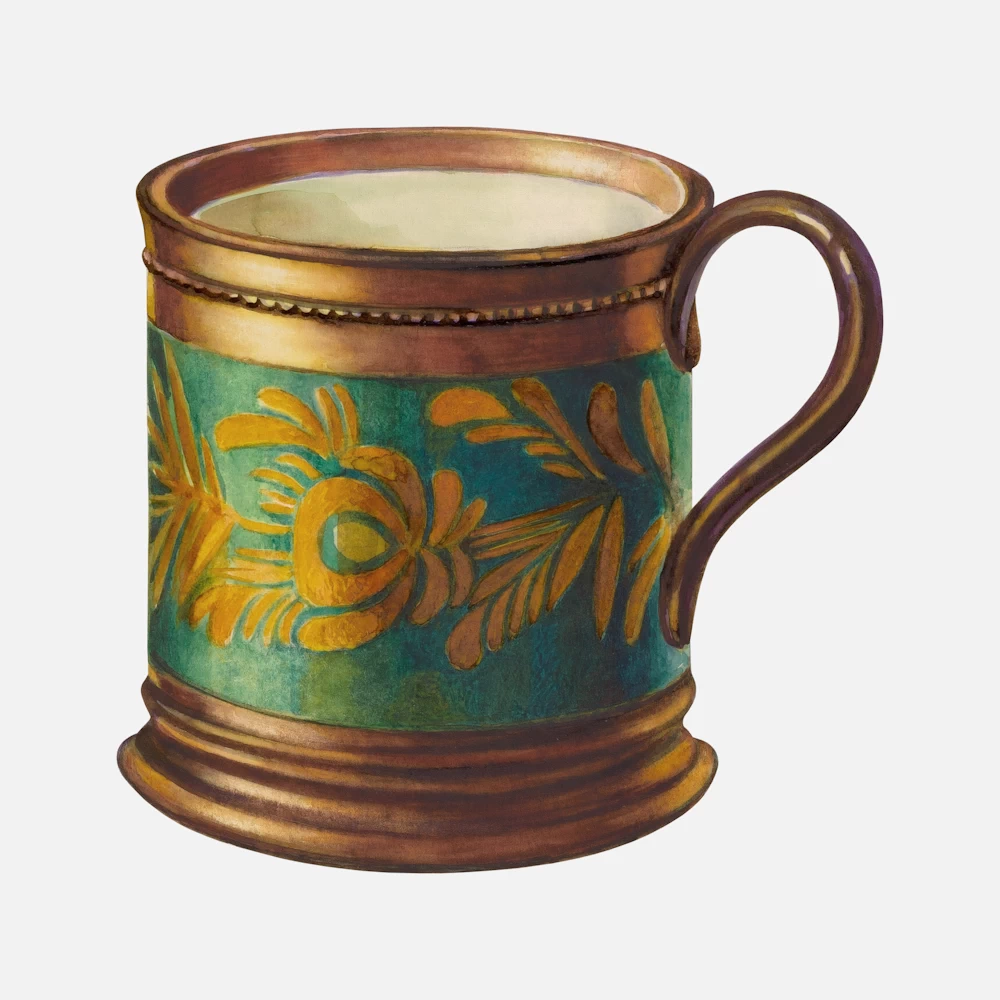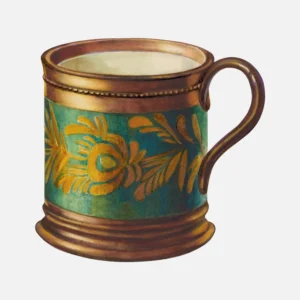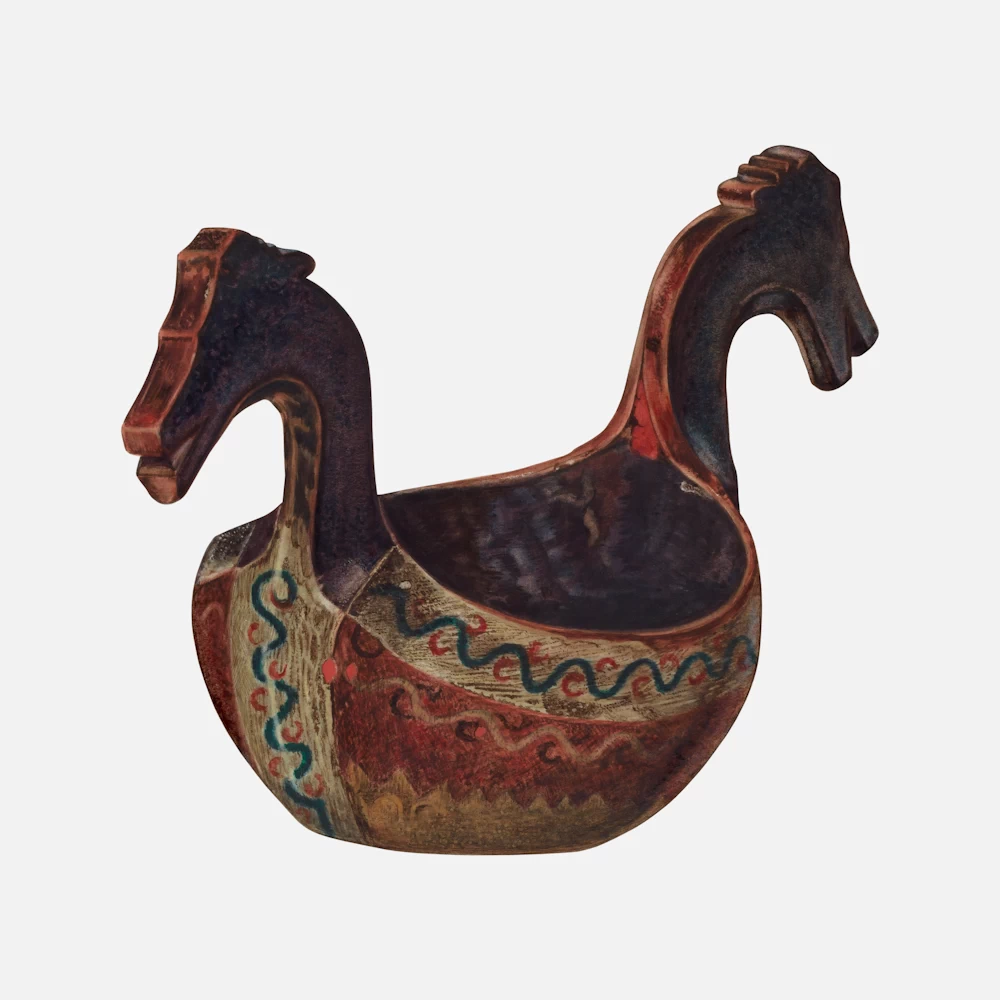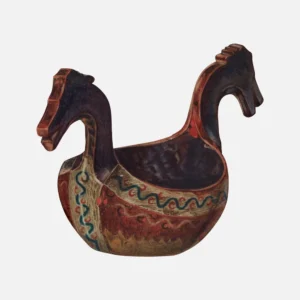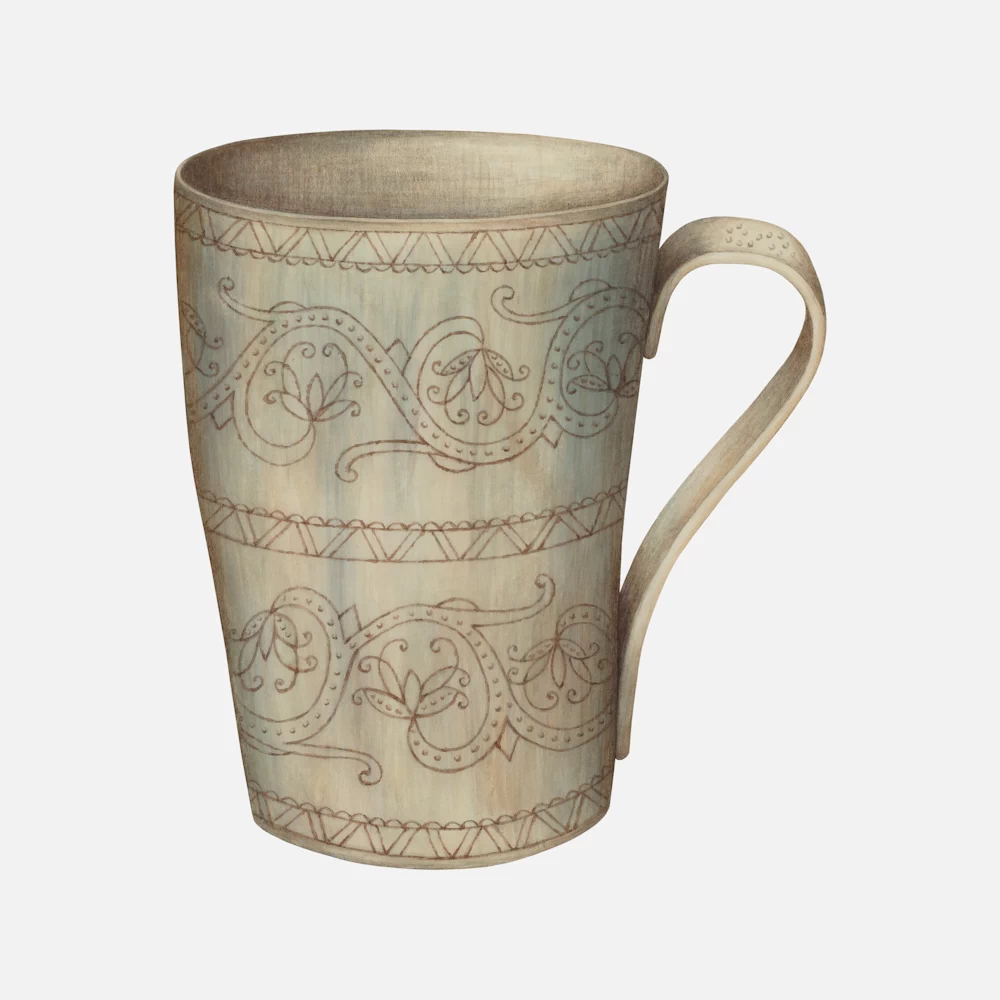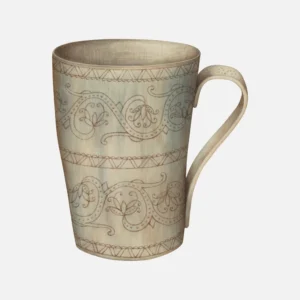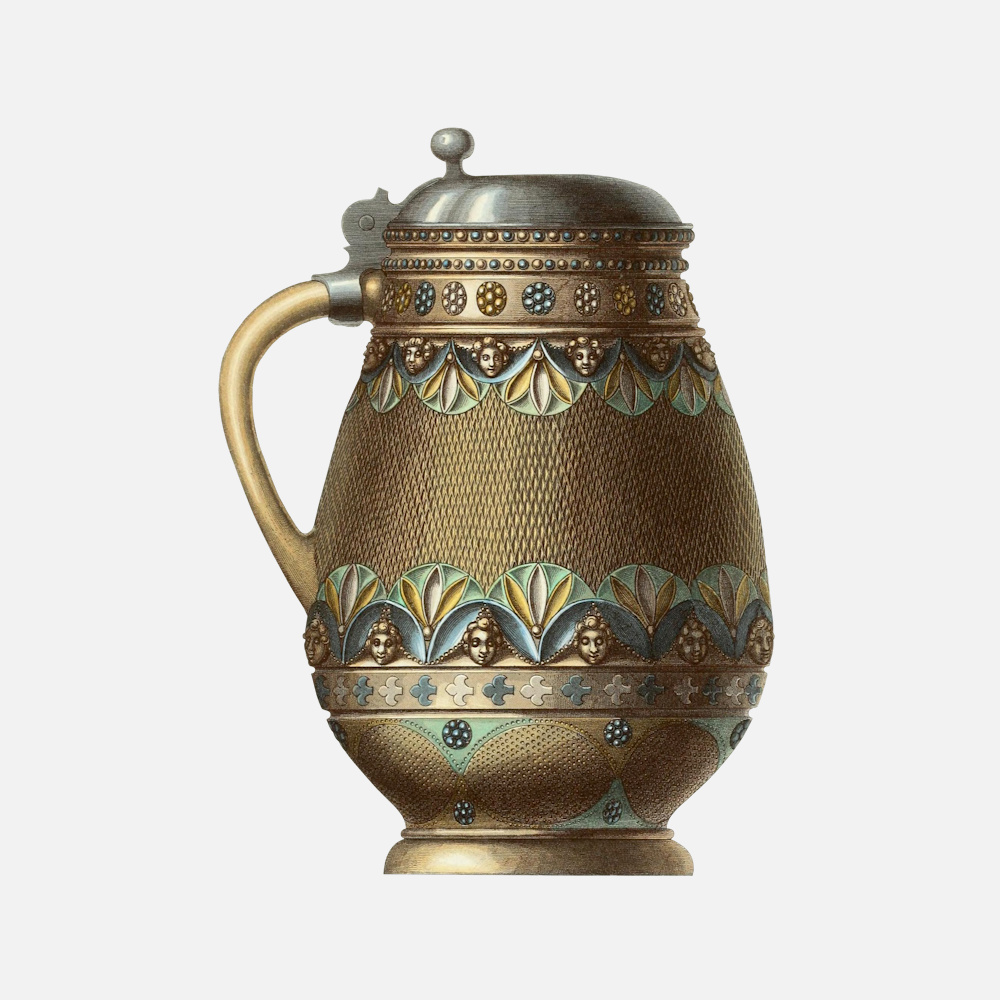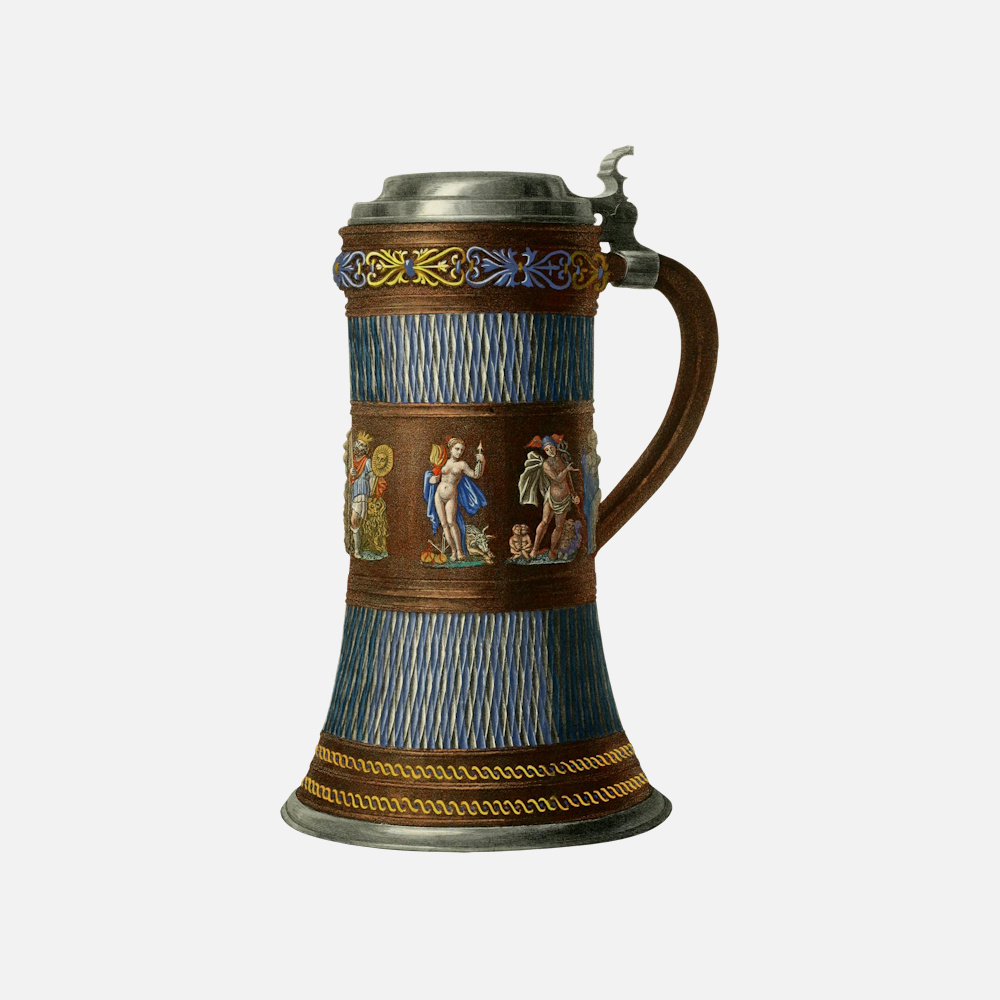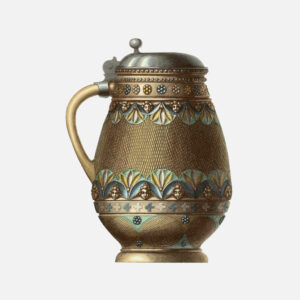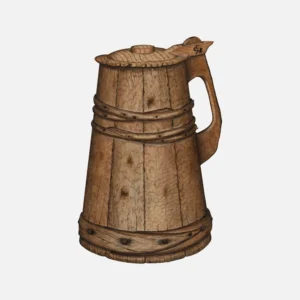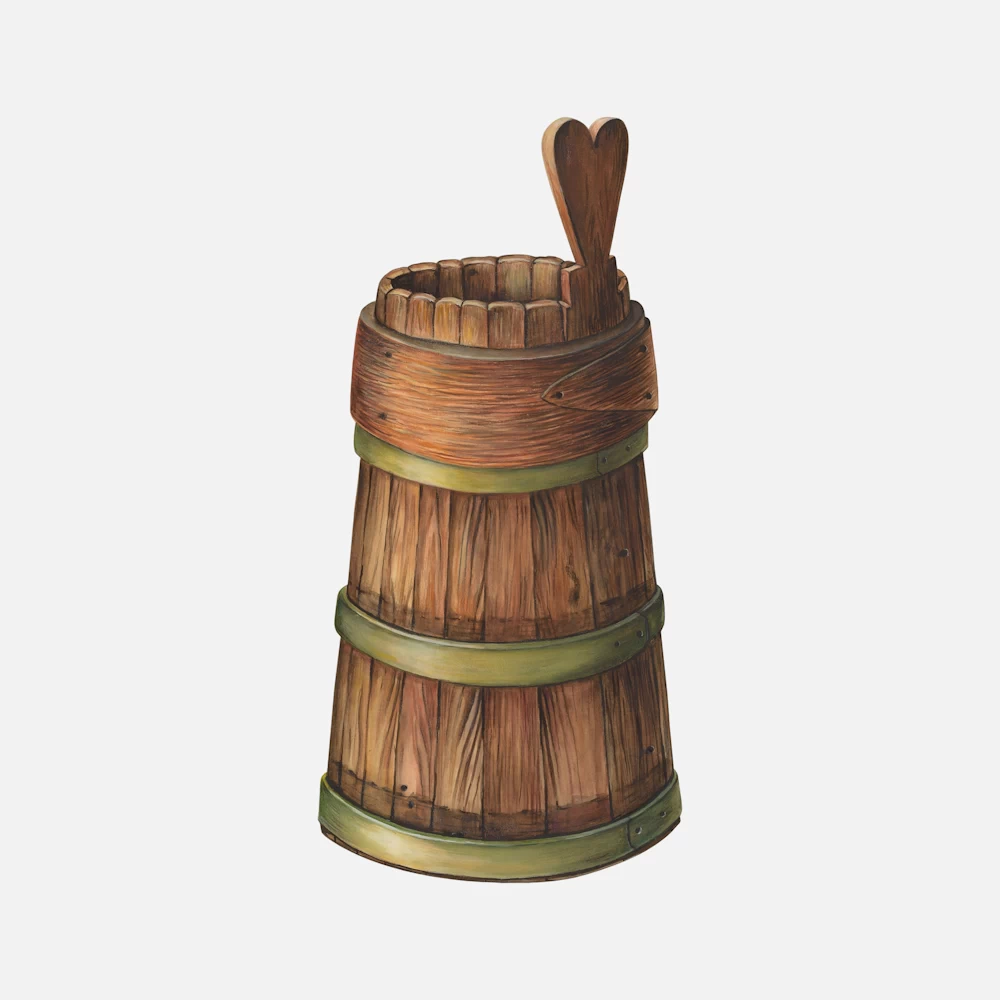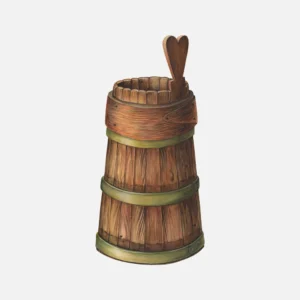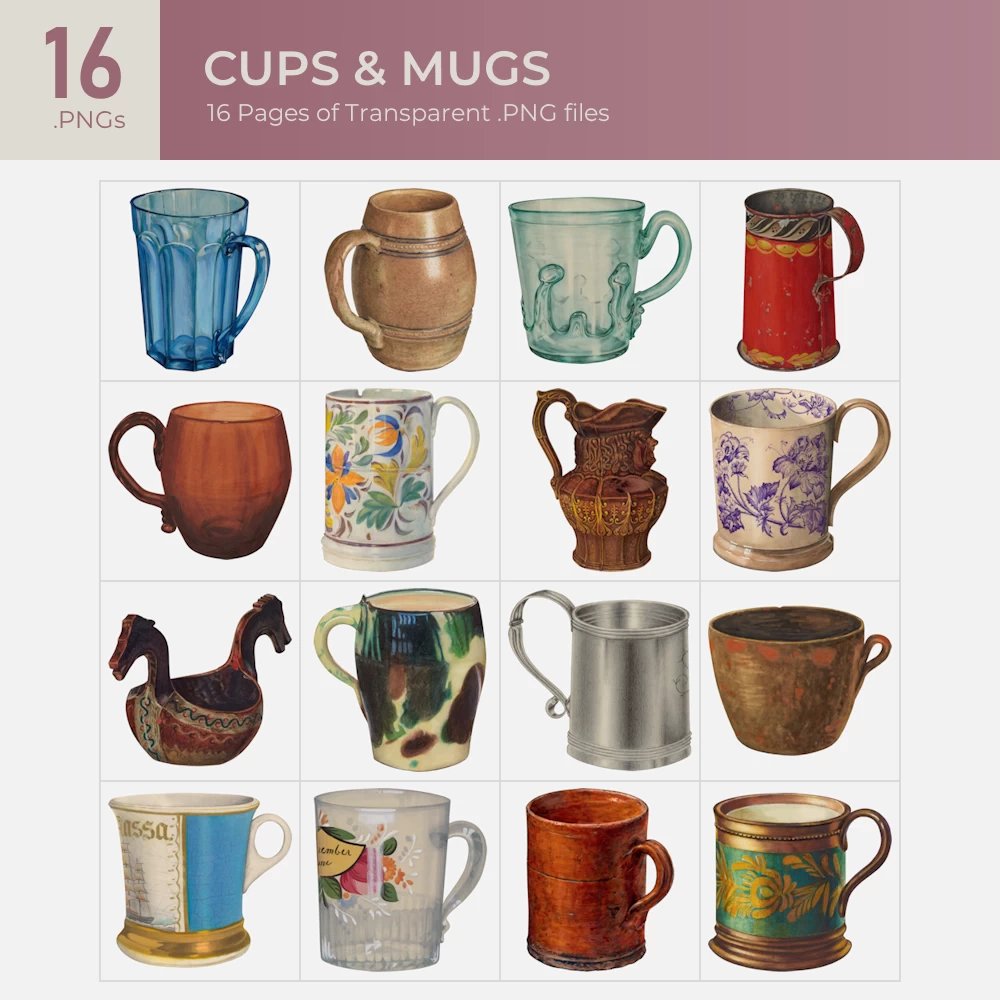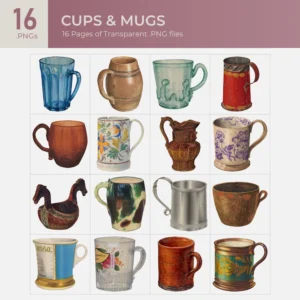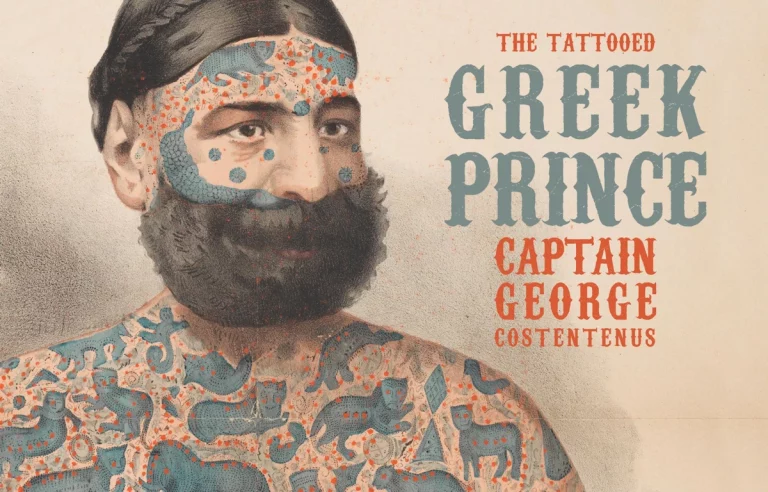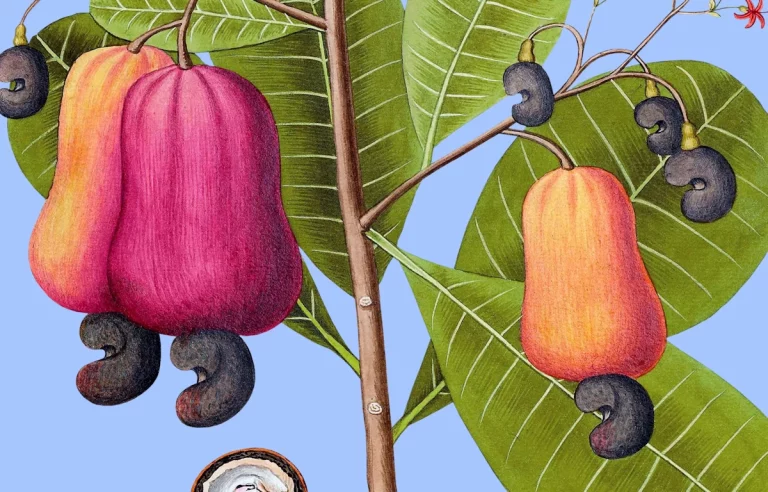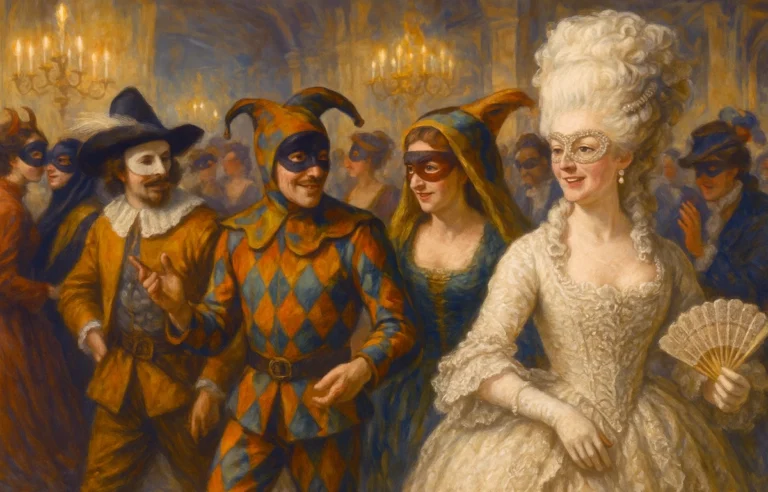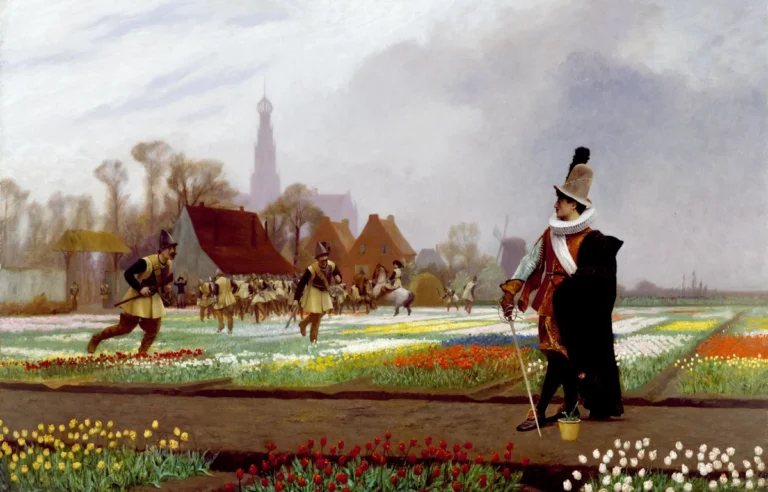Historic Drinking Vessels: From Ancient Mugs to Ornate Steins
Before the days of stainless steel tumblers and stackable coffee mugs, people drank from vessels as varied and vibrant as the cultures they came from. From lusterware that shimmered like treasure to rough-hewn wooden tankards fit for a Viking, historic drinking vessels reveal a lot about the people who used them. These objects were personal, social, and sometimes ceremonial. Whether carved from horn or painted with gold, each cup reflects a moment in history worth revisiting.
Stoneware & Earthenware Mugs: Everyday Utility with Handmade Charm
Let’s start with the most down-to-earth of drinking vessels: stoneware and earthenware mugs. These sturdy cups were the everyday companions of workers, farmers, and families from the 18th and 19th centuries. They were affordable, practical, and widely used in American homes and taverns.
Take, for example, this pair of stoneware mugs: one a squat, simply glazed form with a gentle curve to the lip; the other taller, equally rough, and full of handmade charm. These mugs weren’t trying to impress anyone—they were made to be held, used, and refilled again and again. Their warm, earthy colors and thick walls helped keep beverages hot and hands safe.
Earthenware mugs like these were often locally made and reflect the rustic beauty of early American life. Even the imperfections—a glaze bubble here, a crooked handle there—add to their appeal. They remind us that utility and artistry can go hand in hand.
Toby Mugs: Where the Cup Has Character
What Is a Toby Mug?
Delightful and sometimes bizarre character mugs called Toby mugs first appeared in 18th-century England. These were sculpted in the shape of a person, often a jolly fellow with a tricorn hat (which doubled as the pouring spout). Think of them as the bobbleheads of the drinking world.
The two marvelous examples here show how much personality these mugs could pack. The classic glazed Toby mug below features a man in a cocked hat, with a grin on his face as if to say, “Go on, have a drink with me.” Another takes a more regal turn, depicting none other than Napoleon, complete with military garb and commanding expression.
Are Toby Mugs Valuable Today?
Toby mugs weren’t just silly for silliness’ sake. They reflected the humor and satire of the times, poking fun at public figures or celebrating local characters. Today, they are highly collectible and serve as conversation starters in any collection of vintage cups.
Shaving Mugs: Personal Grooming Meets Personal Style
In the 19th and early 20th centuries, every man had his own shaving mug at the barbershop. These weren’t just for lathering—they were badges of identity. Personalized with names, initials, or painted scenes, shaving mugs reflected pride, profession, and personality.
One lovely example shows a white ceramic mug trimmed in shiny gold, with a broad section of sky blue around the handle. Decorated with a ship, it has a formal elegance, almost like a trophy. You can picture it lined up among dozens on a wooden shelf in a barbershop, each man reaching for his own as he prepared for a shave.
Shaving mugs were part of a social ritual—a time when grooming was also an occasion to chat, relax, and catch up on news. And while they’re rarely used today, they remain a charming window into a very specific part of daily life.
Luster Mugs: Gilded Glamour for the Everyday Table
Luster mugs took everyday drinking and gave it a bit of sparkle. Popular in the 19th century with the newly growing middle class, lusterware was ceramic coated in a thin metallic glaze that gave the surface a brilliant, mirror-like shine.
The luster mug featured here is especially eye-catching: a golden handle, lip, and base frame a wide emerald green band around the center. This green band shimmers with delicate gold floral patterns, adding a layer of elegance and ornament. It’s the kind of mug that catches light—and attention—across a room.
Luster mugs were often given as gifts or used on special occasions. They were ornamental but still usable—the kind of item you might bring out for guests to show off a little taste and refinement. Their shine may have faded with time, but their charm is still golden.
Loving Cups: Shared Sips and Ceremonial Style
What Is a Loving Cup?
A shared drinking vessel with two or more handles, traditionally used in ceremonies like weddings or toasts is called a loving cup. It symbolizes unity and celebration.
A fascinating example is this rustic wooden loving cup that looks like it could have been pulled straight from a Viking banquet. The cup is painted a warm burnt sienna, with primitive horse-shaped handles jutting from either side. Decorative bands of white, green, and red form wave-like patterns around the top and base, evoking ancient tribal designs.
Though rough in texture, this loving cup has deep ceremonial beauty. It reminds us that drinking wasn’t always a solo act—it could be part of a meaningful shared ritual, with each person taking a sip from the same vessel in unity.
Horn Cups: A Toast to Nature’s Curves
Horn cups were drinking vessels made from—you guessed it—animal horn. Durable, lightweight, and naturally curved, horn was a practical material used for centuries, especially before glass and ceramic were widely available.
The striking example here shows a tall, bone-toned horn cup that flares slightly at the top. A sturdy handle is affixed to one side, but the real star is the decoration: the entire surface is covered in fine floral designs and decorative bands, likely achieved through scrimshaw—a technique of etching and inking intricate patterns onto natural materials.
Horn cups like this were often used in rustic settings, from frontier cabins to rural farms. They speak to a time when people used what nature provided—and turned even humble materials into objects of beauty.
Steins: Ornate, Lidded, and Full of Stories
The word “stein” often conjures images of German beer halls and foam-capped mugs, but the historical stein was much more than a party prop. These were elegant, often highly decorated vessels, typically with a hinged lid and thumb lever.
One example, dating from the early 1600s, is a rotund stein with a silver lid, gold handle, and a body decorated in delicate floral patterns, cupid faces, and crosses, all in muted shades of blue, green, gold, and white. Another, from the late 1500s, is taller and slimmer, with tiny painted scenes wrapping around the middle like a miniature storybook.
These were luxury items, made of ceramic, silver, or pewter, and often given as gifts or used in formal toasts. The lids helped keep out insects and debris, but they also gave steins an extra touch of drama—click—as the drinker flipped it open for a hearty swig.
Tankards: Built for Strength, Not Subtlety
If the stein is the nobleman’s cup, the tankard is the woodsman’s. Made from wood, bound in bands, and equipped with a sturdy handle and lid, tankards were all about function. They kept the bugs out and the beer in.
This tankard here looks like it belongs in a dwarven tavern: unpainted, slightly tapered wooden sides, a fat handle, and a plain wooden lid. It’s rugged and practical—nothing fancy, but built to last.
Tankards were common in colonial America and Europe, especially where metal was scarce. While some were made of pewter or silver, wooden ones like this were the everyday go-to. Just imagine it beside a hunk of bread and wedge of cheese on a candlelit table.
Noggins: The Tankard’s Cute Cousin
Noggins are small, often carved wooden vessels shaped like barrels. Traditionally made from the burr of a tree, they were used to serve a small portion of drink—a shot of whiskey, perhaps.
This noggin stands out as both rustic and endearing. Made from vertical wooden staves, it’s held together with brass bands and topped with a wider collar, maybe leather. There’s no handle, but a heart-shaped wooden flourish rises from one side like a wooden bow. It feels handmade in the best way.
Though humble, noggins were beloved for their simplicity. They represent the personal side of drinking culture: something small, meaningful, and all your own.
One Last Sip
From gleaming lusterware to chipped earthen mugs, the history of drinking vessels is a history of people. Each form, each flourish, each fingerprint in the glaze tells us something about who drank from them, what they valued, and how they lived. Some were made for celebration, others for daily use. Some were carved in wood, others painted in gold.
We’ve restored numerous antique cup images and made them background-free. Whether you picture yourself in a teahouse or tavern, we’ve got your next digital drink covered.
Cheers to that.


